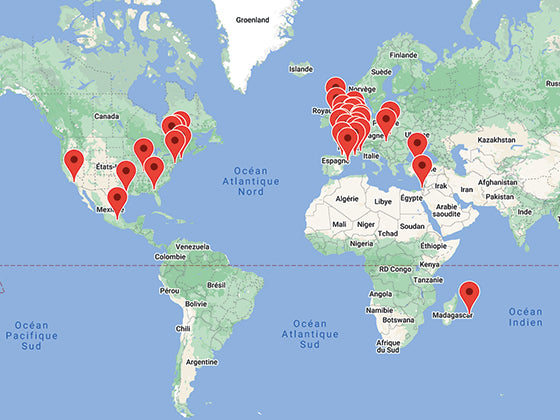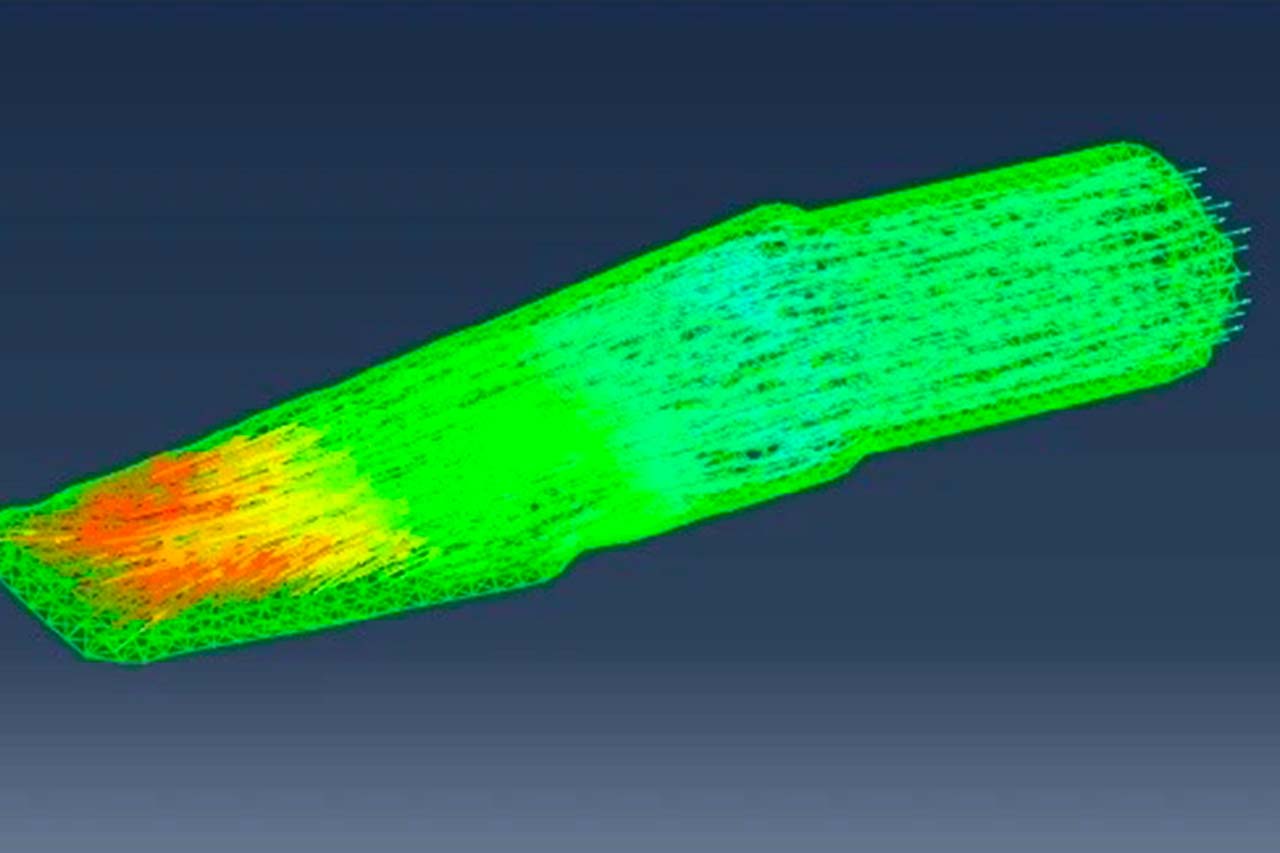In the process of developing a wind instrument, the most important elements are the tuning, the timbre and the ease of play. These characteristics can be predicted, at least partially, by measuring or computing the input impedance. But, what does this mean?
Definition
The input impedance, usually written Z, is the ratio between the acoustic pressure P and the acoustic volume flow U:

What's interesting about the input impedance is that it's an objective descriptor of the instrument's behaviour. It can be measured, or calculated, for a musical instrument without needing a musician. Z usually changes drastically when the frequency changes, so it is a spectrum. The input impedance shows the acoustic response of the instrument for the entire range of possible frequencies. The impedance provides information about how the instrument will react to varying excitations.
By measuring the input impedance at the "entrance" of the instrument, we can see how the player's lips (for the trumpet for example), the reed (for the clarinet or saxophone) or the air jet (for the flute) from the mouth will interact with the instrument itself. This allows us to understand the acoustic performance of the instrument, independently of the musician, and thanks to the input impedance, it is possible to compare subtle differences between instruments. After measuring the input impedance of 4 different Yamaha saxophones (all the same model), I realized that the repeatability of their production line was impressive, but that's another story...
Measurements
So how can we measure it? There are many different methods that are all described in this article but it's long and complex...

During my PhD at Ircam and my Postdoc at McGill University, I used an input impedance sensor developed at Le Mans University. There are 2 cavities, separated by a piezoelectric buzzer. The buzzer stimulates the instrument that is connected to the sensor (as shown in the photo below) by making a chirp, changing from low to high frequency. This allows us to see how the instrument will react to a whole range of frequencies. Then, the pressure measured by the microphone 1, is proportional to the volume flow U and the microphone 2 gives the pressure P at the entrance of the instrument.

The input impedance is different for each fingering of the saxophone so, depending on what we were looking to analyze, we had to measure the impedance of several different fingerings. And we actually found that the musician, by pressing the keys with a different level of strength, had an impact on the input impedance.
You can see these differences in the curves below: the input impedance is measured twice (1 and 2) for three musicians (NM, PE and RC). The first figure is the entire frequency diagram, whereas the following figures are close-ups of some frequency peaks (175 Hz and 380 Hz) extracted from the first figure. Depending on the strength, the pads will be more or less pushed inside the chimney, slightly changing the inside geometry of the instrument, thus changing the input impedance.

So finally, we decided to use clamps for measurements, to retain the same strength on the keys and have repeatable measurements.
How to analyze an input impedance curve?
The amplitude of the input impedance has several peaks which correspond to the resonance frequencies of the instrument. For example, the following figure shows the input impedance measured on a trumpet with no valves pressed in. With that fingering, the notes that can be played by the musician are the series of concert notes Bb2 (233 Hz), F3 (349 Hz), Bb3 (466 Hz), D4 (587 Hz), F4 (698 Hz). We can see in the figure that the frequency of the peaks correspond to the frequency of the playable notes. So if we measure the input impedance of this trumpet for the other fingerings, we will know straight away if the instrument is in tune without having to play it.

The input impedance also provides information on the timbre and the ease of play of the instrument. Usually, if, for a given fingering, the input impedance presents a lot of peaks whose frequency is a multiple of the playing frequency, then the played note will be enriched with higher harmonics (bright sound). The amplitude of resonance peaks and their quality factor can also indicate if a note will be easy to play or not. If the resonance peak that corresponds to a note has a low amplitude, the musician will need to blow harder to play the note than if the peak has a larger amplitude.
References
Eveno 2012 : Pauline Eveno: L’impédance d’entrée pour l’aide à la facture des instruments de musique à vent : mesures, modèles et lien avec les fréquences de jeu, Thèse de l'Université Paris 6, 2012
Dalmont & Le Roux 2018: Jean-Pierre Dalmont et Jean-Christophe Le Roux: A new impedance sensor for wind instruments, The Journal of the Acoustical Society of America 123, 3014 (2008)













